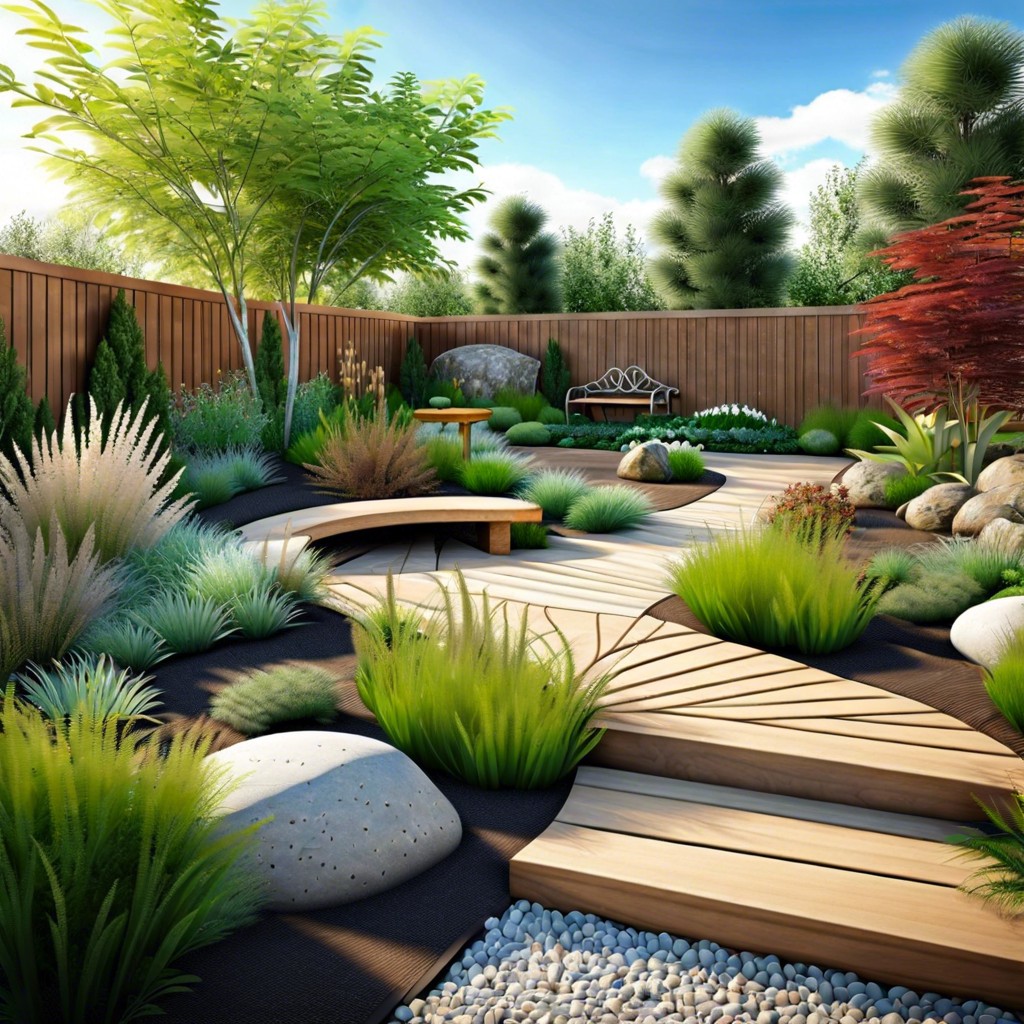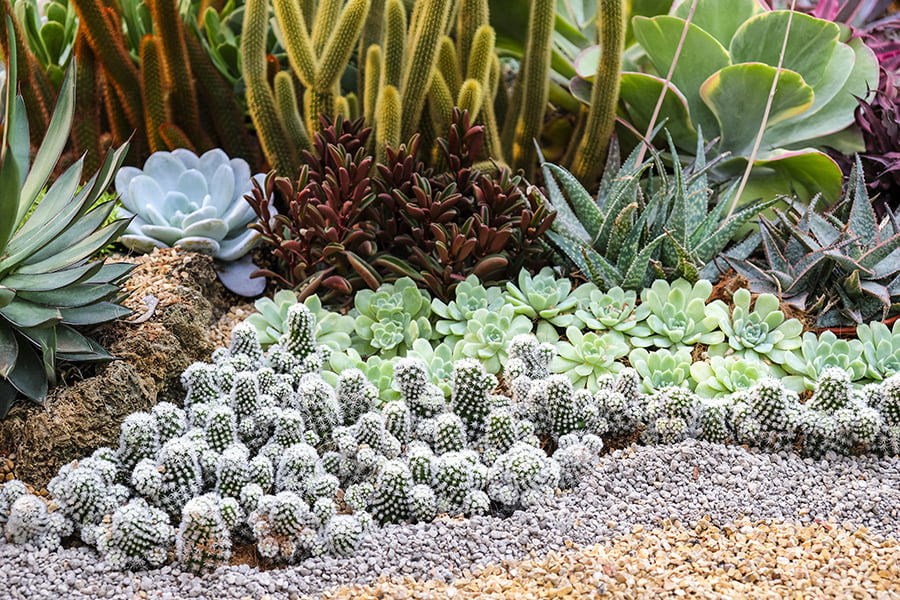Welcome to our comprehensive guide on down-to-earth landscaping services, where you’ll learn how to transform your outdoor space with practical, sustainable, and aesthetically pleasing solutions.
Key takeaways:
- Select plants adapted to local climate and soil conditions
- Use organic mulches like bark or compost for healthier plants
- Compost yard waste and kitchen scraps to enrich soil
- Replace lawns with drought-resistant ground covers or xeriscapes
- Implement rainwater harvesting techniques like rain barrels and swales
Understanding Down to Earth Landscaping

Down to Earth Landscaping takes a modest, straightforward approach that respects the natural environment while fulfilling the aesthetic and functional needs of outdoor spaces. This philosophy focuses on low-maintenance gardens that blend harmoniously with the local ecosystem, promote biodiversity, and reduce the carbon footprint.
At its core, this method involves using techniques that require fewer resources, such as water and energy, thus being more sustainable in the long term. Landscapers who adopt this style often use organic materials, compost, and mulch to improve soil health without relying on chemical fertilizers. They prioritize designs that require less mowing, watering, and pruning, thus conserving labor and natural resources.
A significant aspect is the thoughtful selection of plants. By choosing species that are indigenous to the area, these landscapes support local wildlife, including pollinators like bees and butterflies, and are more likely to thrive without extensive care or watering. This type of landscaping not only enhances the beauty of a property but also contributes to the well-being of the earth and its inhabitants.
Eco-Friendly Landscaping Practices
Incorporating eco-friendly practices into your landscaping is not only beneficial for the environment but also can enhance the beauty and sustainability of your outdoor space. Here are some key principles to keep in mind:
Firstly, select plants that are well-adapted to your local climate and soil conditions. This reduces the need for water and chemical fertilizers and promotes biodiversity by providing habitat for local wildlife.
Next, consider the use of organic mulches like bark or compost. Mulching conserves moisture, regulates soil temperature, and adds nutrients as it breaks down, making for healthier plants and minimizing the need for watering and artificial aids.
Composting is another cornerstone of environmentally responsible landscaping. By turning yard waste and kitchen scraps into nutrient-rich compost, you create a natural fertilizer that enriches the soil without harmful chemicals.
Additionally, reducing lawn areas in your landscape is a powerful way to conserve water. Lawns are often a major water consumer, so consider replacing them with drought-resistant ground covers or creating a xeriscape, which requires minimal irrigation.
Finally, integrated pest management (IPM) approaches can minimize the need for chemical pesticides. Encouraging beneficial insects that prey on pests, using barriers to prevent damage, and applying natural pest control methods are all IPM strategies that contribute to a down to earth landscaping approach.
By weaving these eco-friendly practices into your landscaping efforts, you’ll craft an outdoor space that’s not only attractive but also harmonious with the natural world.
Designing With Native Plants
Incorporating native plants into your landscape carries a range of benefits that extend beyond simple aesthetics. These indigenous species have adapted over time to thrive in the local climate and soil conditions, meaning they require far less maintenance than their exotic counterparts. This not only reduces the need for watering, fertilizing, and pest control but also supports local wildlife, providing food and habitat for birds, butterflies, and beneficial insects.
When selecting native plants, consider the diversity of species available. Aim for a mix of flowering plants, shrubs, and trees to create year-round interest in your garden. Start by researching which species are native to your area and which are suited to your specific soil and light conditions. Many local nurseries now carry a selection of native plants and can offer advice on how to integrate them into your landscape design.
Remember, designing with native plants doesn’t mean sacrificing style or variety. Many native species offer stunning blooms and a wide range of textures and colors. With thoughtful planning, you can achieve a beautiful, low-maintenance landscape that sits in harmony with its natural surroundings.
Rainwater Harvesting Techniques
Integrating rainwater harvesting into your landscape design can significantly reduce your water consumption while benefiting your garden. By collecting and storing rainwater, you can provide a sustainable water source for your plants and soil during dryer periods. Here are some effective techniques to help you get started:
– **Rain Barrels** are a simple and common method. Place them under downspouts to capture runoff from your roof. A spigot at the bottom of the barrel makes it easy to water your plants when needed.
– **Rain Gardens** consist of a shallow depression planted with deep-rooted native plants and grasses. Positioned to intercept runoff, they allow water to soak back into the soil, reducing erosion and filtering pollutants.
– **Permeable Paving** replaces traditional hardscaping with materials that let water penetrate the ground. Options include porous concrete, interlocking pavers, and gravel. This reduces runoff and replenishes the groundwater.
– **Swales** are shallow channels that direct rainwater across the landscape, allowing more time for it to be absorbed and minimizing water loss through evaporation or runoff.
– **Drip Irrigation Systems** can be connected to your rainwater collection system, providing a direct, controlled water supply to plants. This method reduces the wastage associated with overwatering and minimizes the spread of plant disease by keeping foliage dry.
Implementing these rainwater harvesting techniques will ensure your landscaping efforts are not only beautiful but also sustainable and efficient in water use.
Landscape Maintenance
Maintaining a down-to-earth landscape is all about fostering a healthy outdoor space while minimizing environmental impact. One of the key aspects is to prioritize organic methods over chemical treatments, which can be harmful to both the ecosystem and human health.
A thoughtful maintenance plan begins with the soil. Enriching the ground with compost enhances soil fertility naturally, encouraging robust plant growth. Compost can be made from kitchen scraps and yard waste, reducing the need for synthetic fertilizers.
The right mowing practices also make a difference. Keeping grass at an optimal height promotes root development and discourages weeds. Remember to leave grass clippings on the lawn; they decompose and act as a natural fertilizer.
Watering wisely is crucial. Rather than following a rigid schedule, assess the landscape’s needs by observing plant health. Drip irrigation systems and soaker hoses are more efficient than sprinklers, delivering water directly to plant roots with less evaporation.
Promoting biodiversity not only creates a vibrant garden but benefits the entire local ecosystem. Integrating plants that attract pollinators such as bees, butterflies, and birds provides essential support for these species.
Lastly, respect the changing seasons. Spring and fall clean-ups, adequate mulching, and preparing plants for dormancy are season-specific tasks that can protect your landscape from extreme weather and give it a stronger start in the subsequent growing cycle.
These maintenance practices align with the down-to-earth philosophy that values sustainability and ecological responsibility while ensuring that the landscape remains a beautiful, functional space.
Also interesting:




